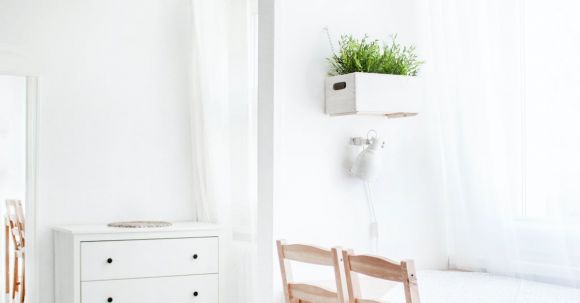Scandinavian design has gained worldwide recognition for its timeless appeal and minimalist aesthetic. From furniture to home decor, Scandinavian design has continuously captivated people’s attention for decades. But what exactly makes this design style so enduring? In this article, we will explore the key elements that contribute to the longevity of Scandinavian design.
Simplicity and Functionality
One of the defining characteristics of Scandinavian design is its simplicity. The philosophy behind this approach is to strip away unnecessary embellishments and focus on the essential elements. This emphasis on simplicity creates clean lines and uncluttered spaces, making Scandinavian design visually appealing and timeless.
Additionally, Scandinavian design prioritizes functionality. Every piece of furniture or object is designed with a purpose in mind. Form follows function, resulting in practical yet beautiful designs. This commitment to functionality ensures that Scandinavian design remains relevant and useful throughout the years.
Natural Materials and Textures
Scandinavian design draws inspiration from the region’s natural landscapes, incorporating natural materials and textures into its creations. Wood, in particular, plays a significant role in Scandinavian design. Whether it’s light-colored birch or warm oak, the use of wood brings warmth and a sense of nature into the space.
Furthermore, Scandinavian design often incorporates other natural materials such as leather, wool, and linen. These materials not only add visual interest but also provide a tactile experience that enhances the overall appeal of the design. The use of natural materials and textures adds depth and longevity to Scandinavian design, making it stand the test of time.
Neutral Color Palette
Another characteristic of Scandinavian design is its neutral color palette. Scandinavian interiors typically feature a combination of whites, grays, and earthy tones. This restrained color scheme creates a sense of calmness and allows the design to take center stage.
The use of neutral colors also makes it easier to incorporate different design elements and accessories. By keeping the backdrop neutral, Scandinavian design provides a versatile canvas that can be personalized and updated over time without compromising the overall aesthetic.
Timeless Iconic Pieces
Scandinavian design is renowned for its iconic pieces that have become timeless classics. From the Egg Chair by Arne Jacobsen to the PH Lamp by Poul Henningsen, these designs have stood the test of time and continue to be sought after by design enthusiasts worldwide.
The enduring popularity of these iconic pieces can be attributed to their impeccable craftsmanship and attention to detail. Scandinavian designers place a strong emphasis on quality, resulting in furniture and objects that not only look good but also last for generations. These timeless pieces serve as a testament to the longevity of Scandinavian design.
Adaptability and Evolution
While Scandinavian design has a distinctive aesthetic, it has also embraced adaptation and evolution over the years. Designers have found ways to incorporate new materials, technologies, and influences into their creations while still staying true to the core principles of Scandinavian design.
This adaptability has allowed Scandinavian design to remain relevant and fresh in a rapidly changing world. By incorporating new ideas and innovations, Scandinavian design continues to captivate and inspire, ensuring its lasting impact.
In conclusion, Scandinavian design stands the test of time due to its simplicity, functionality, use of natural materials, neutral color palette, timeless iconic pieces, and adaptability. These key elements come together to create a design style that is not only visually appealing but also practical and enduring. As trends come and go, Scandinavian design remains a timeless and relevant choice for those seeking a minimalist and elegant aesthetic in their homes.





